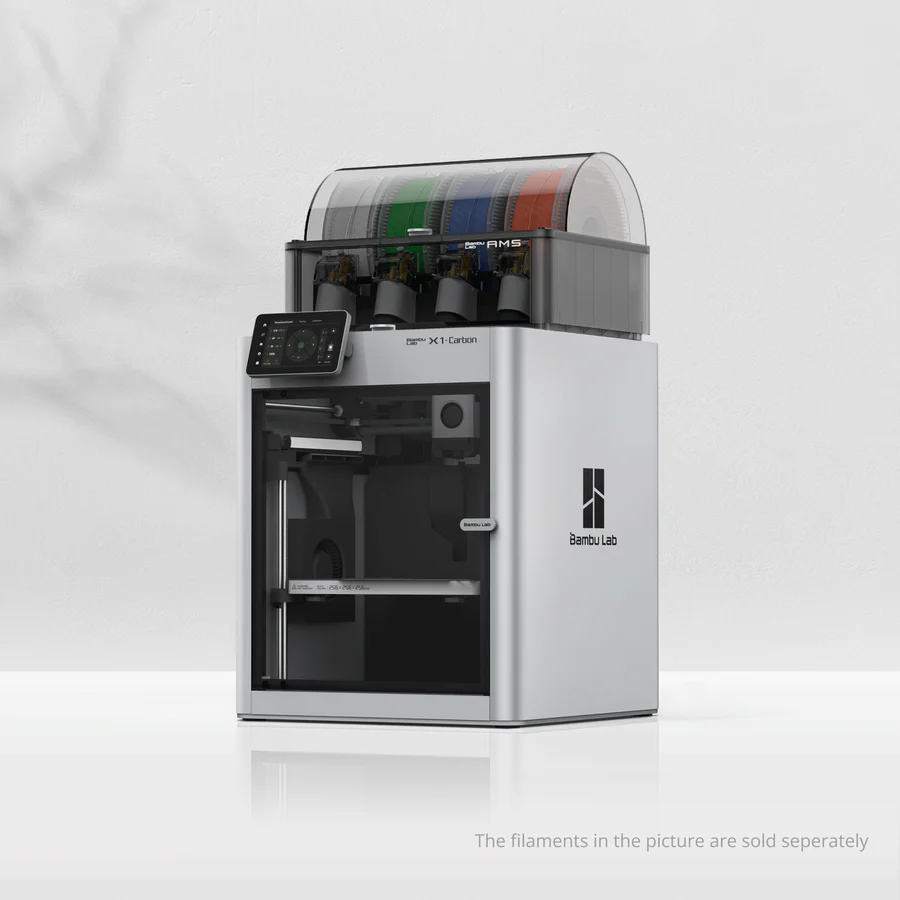Compare X1 carbon vs Halot Mage
Comparison between the best 3D printers
Choose the best 3D printer at the best price. The cheapest 3D printers are here.
Buy a 3D printer here with 3D Fila.
 |
 |
|
| Model | X1 carbon |
Halot Mage |
| Printing Material | Filament | Resin |
| Buy Filament for Bambu Lab X1 carbon | Buy Resin forCreality 3D Halot Mage | |
| Estimated price | $1449,00 | $399,00 |
| Manufacturer | Bambu Lab | Creality 3D |
| Release Year | 2023 | 2023 |
| Print Volume [mm] | 256x256x256 | 228x128x230 |
| Printer Size [mm] | 389x389x457 | 333x270x608 |
| Weight [kg] | 14,13 | 12 |
| Power Loss Recovery | YES | NO |
| Maximum Resolution [mm] | 0,1 | 0,01 |
| Processor | Quad ARM A7 1.2 GHz | |
| Display | Touchscreen 5'' | Display touchscreen 4,3'' |
| Power Supply | 350 W | 100 W |
| Connectivity | Wifi, Bambu bus, Cartão SD | USB |
| Operating systems | Windows, Linux, Macbook | Windows, Mac, Linux |
| Date of registration in the system | 2024-04-10 | 2023-05-23 |
| Release date | 2023 | 2023 |
| Extra features | The Bambu Lab X1 Carbon revolutionizes 3D printing with stunning design, high print speeds, and a streamlined user experience. It stands out with its CoreXY system, a hotend capable of reaching 300°C, allowing for a wide range of filaments. Its LiDAR-assisted bed leveling system, vibration compensation, and AMS multicolor printing capability raise the industry standard. Print quality is impressive, with the ability to fine-tune for perfection. The X1 Carbon, with its closed build volume, not only promises but also delivers one of the most advanced 3D printing experiences available to consumers. | The Halot Mage stands out with its easy-to-operate, space-saving MageArch hinged lid that filters 99.89% of UV light. It includes an integrated air purifier with a large, efficient activated carbon filter that is ideal for absorbing resin odors. Its ultra-stable Z-axis with dual linear rails ensures larger, more accurate prints with minimal wobble. Plus, it features a robust tempered glass LCD protector for durability and protection against impacts and resin spills. |
| Support for multiple colors and materials (AMS and CFS) | YES | NO |
Notes * |
||
| Cost-benefit | 7 / 10 | 8 / 10 |
| Hardware | 6.4 / 10 | 4 / 10 |
| Tela | . | . |
| Print volume | 4 / 10 | 3 / 10 |
| Performance | 4 / 10 | 9 / 10 |
Conclusion |
| In conclusion, both the Bambu Lab X1 Carbon and the Creality 3D Halot Mage present compelling choices in the 3D printing realm, each catering to different user needs and preferences. The Bambu Lab X1 Carbon, despite its higher price, delivers advanced features such as a large print volume, impressive speed, and a wide range of supported materials, backed by superior print quality and innovative technologies like LiDAR-assisted bed leveling and multicolor printing. Its robust performance and ability to recover from power losses further enhance its usability, making it suitable for users who prioritize high-quality and versatile 3D printing. On the other hand, the Halot Mage emerges as a cost-effective solution ideal for beginners or hobbyists looking for an affordable entry into 3D resin printing. With its easy operation, integrated air filtration system, and space-saving design, it excels in practicality and user-friendliness. The machine's solid build quality and exceptional stability are notable advantages for producing accurate prints. Ultimately, the choice between the two depends on the user's specific needs. If budget permits and advanced features are a priority, the X1 Carbon is the clear leader. However, for those seeking a reliable and economical option without extensive frills, the Halot Mage provides remarkable value. |

